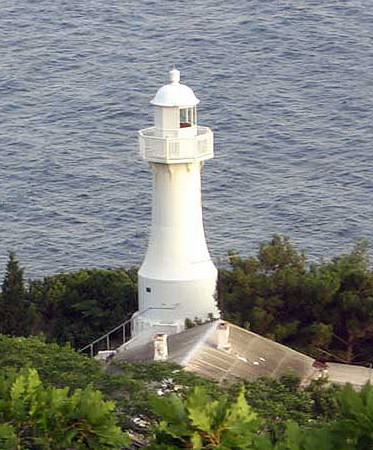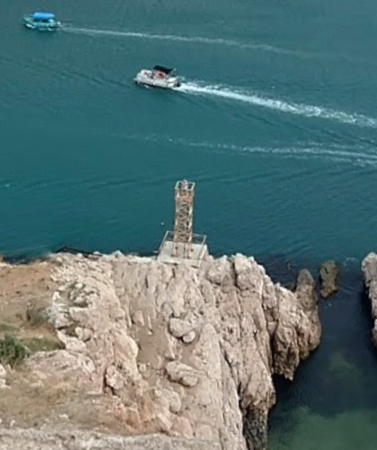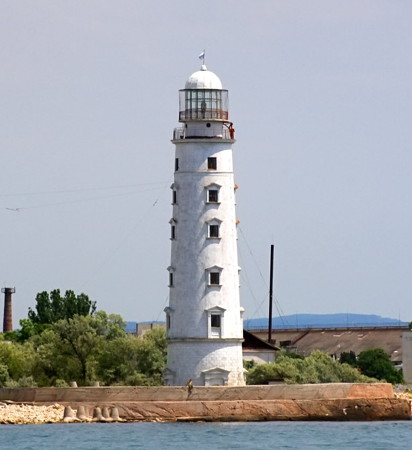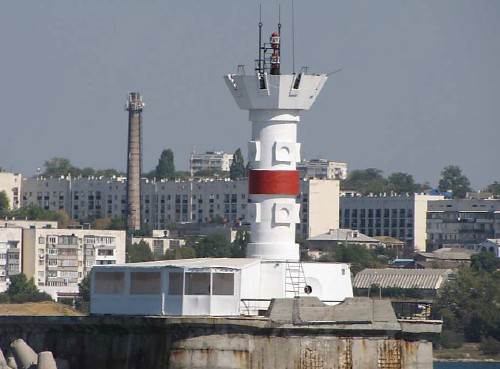The Directory's pages for Crimea describe the lighthouses as they existed before the start of the current conflict between Ukraine and Russia. No changes will be made until there is a stable agreement that stops the fighting. Russian occupied territories in Ukraine are identified as East Ukraine.
Crimea is a peninsula on the north side of the Black Sea, attached to the mainland by a narrow isthmus. The territory has a long and complicated history. It was annexed to the Russian Empire in 1783. In the Soviet Union it was at first an autonomous republic and later an oblast (province) within the Russian Federation. In 1954 Crimea was transferred from the Russian Federation to the Ukrainian Soviet Socialist Republic. When the Soviet Union collapsed in 1991 Crimea became part of the newly-independent nation of Ukraine. However, Russia continued to occupy several important military bases in the territory, including the home port of the Black Sea Fleet in Sevastopol'.
In March 2014 Russia annexed Crimea, leaving the Ukrainian coast in two sections: the Bight of Odessa in the west and the northwestern side of the Sea of Azov in the east. The annexation of Crimea has not been accepted by Ukraine or recognized internationally. Important note: The Lighthouse Directory's mission and task is to describe lighthouses without offering any comment or opinion on politics or international relations. Our descriptions are always of the actual situation whatever it may be. The Crimean lighthouses are described here as Russian because de facto Russia possesses and operates them.
The members of the Russian Federation are called federal subjects (sub'yekty federatsii, Субъекты федерации). Sevastopol' was admitted to the Russian Federation as a federal city (gorod federalnogo znacheniya, город федерального значения): the same status held by Moscow and by St. Petersburg. The rest of Crimea was annexed as the Republic of Crimea (Respublika Krym, Республика Крым). This brought the number of federal subjects to 85.
This page includes lighthouses of the City of Sevastopol' region in the southwestrn section of the Crimean Peninsula.
Most of the lighthouses of Crimea were destroyed or heavily damaged during World War II (or the Great Patriotic War, as it is called in Russia). German troops invaded in 1941 and captured all of the peninsula except for some of the highest mountains; Sevastopol' surrendered in July 1942 after a bitter nine-month siege. Soviet troops drove the Germans out in equally heavy fighting in 1944.
The Russian word for a lighthouse is mayak (маяк); ostrov is an island, poluostrov is a peninsula, kosa is a sandy spit, rif is a reef, mys is a cape, bukhta is a bay, zaliv is a larger bay or gulf, proliv is a strait, reka is a river, and gavan' is a harbor.
ARLHS numbers are from the ARLHS World List of Lights. Admiralty numbers are from volume N of the Admiralty List of Lights & Fog Signals. U.S. NGA List numbers are from Publication 113.

Sarych Light, Foros, July 2008
unattributed photo from Geocaching.su





